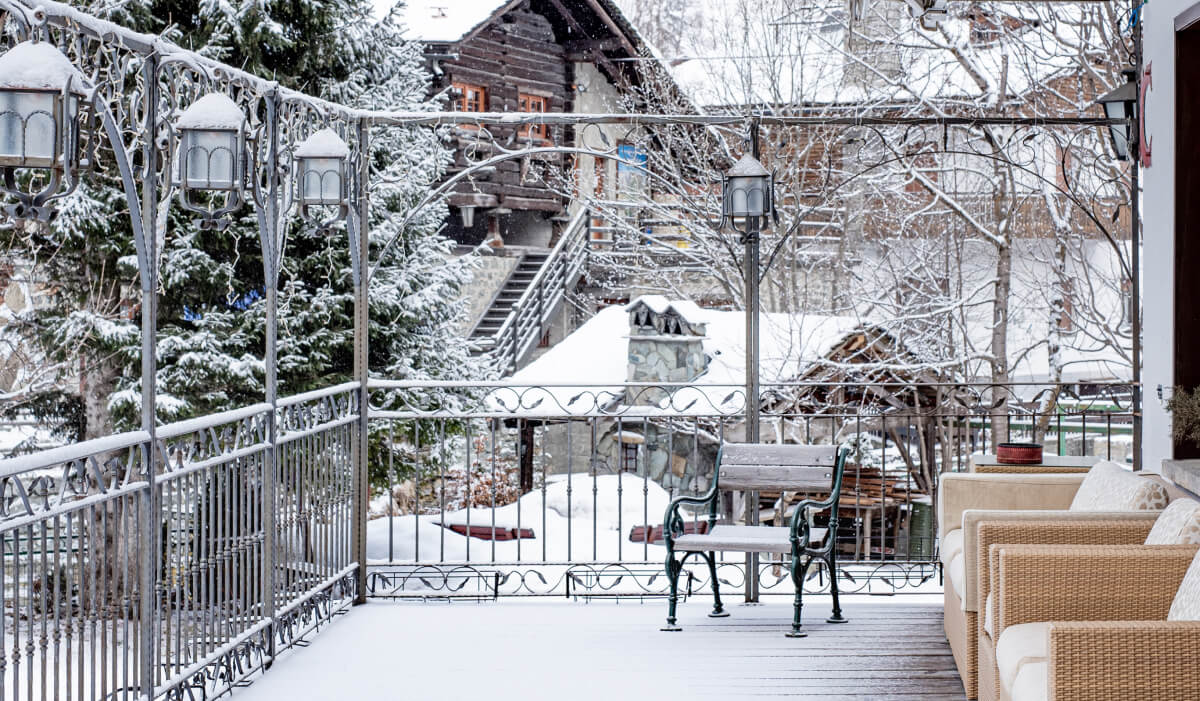

 Stacey Mullen
Stacey Mullen
Nov 14, 2023
At the risk of giving short shrift to the summer of 2023, the focus of mountain destinations is now lasered onto the upcoming winter and how rates are impacting bookings throughout the season as of Oct. 31. Suffice it to say, after what was shaping up to be dismal summer as of last February, the summer became a modest success as lodging properties recognized that sluggish bookings and low occupancy last spring required some rate adjustments. Although the season finished slightly down, the summer was more than salvaged in both occupancy and revenues. That summer assessment, along with a cautionary update on the current situation for lodging at western mountain destinations, was revealed yesterday in their monthly Market Briefing released by DestiMetrics,* the Business Intelligence division of Inntopia. So, as summer wrapped up with a 1.8 percent decrease in occupancy, and a 1.5 increase in daily rates compared to one year ago for essentially flat aggregated revenue, the winter forecast is currently picking up where summer left off with overall winter occupancy currently down year-over-year—and even declining from one month ago.
October occupancy dipped
In a year-over-year comparison, October occupancy was down four percent, the Average Daily Rate (ADR) was up a slight 1.3 percent and aggregated revenues for the month finished down 2.5 percent compared to October 2022. As expected, the contrast with four years ago and prior to the pandemic, October occupancy was up a modest 2.2 percent while the ADR was up a dramatic 48.1 percent compared to four years ago to deliver revenues that were up 52.5 percent.
“These final summer numbers confirm a ‘reset’ in the exploding rate growth we have recorded in the past couple of years,” confirmed Tom Foley, senior vice president of Business Intelligence for Inntopia. “Lodging properties were watching how shoppers were reacting to rates this summer and adjusted accordingly as rate sensitivity remained a consideration for some destination visitors. We may finally now be seeing daily rates that are more sustainable for the longer term.”
Ups and downs for the winter season—some of both
With data for the full six winter months now available, as of Oct. 31, on-the-books occupancy for November through April is down a slight 1.7 percent compared to the same time last year with modest gains of less than three percent in December and April and moderate declines from 1.5 to 4.2 percent in the other four months. In a complete flip with the occupancy data, daily rates for the full winter are up 2.7 percent but are down for the months of December and April while the remaining four months are currently posting increases with March leading the way—up 6.6 percent compared to last year.
Foley clarified that “the correlation between months that are gaining in occupancy where rate is down and vice-versa is a continuation of rate patterns that we saw being reset during the summer. And, it is a clear indication that consumer price-sensitivity remains an issue as we move into winter.”
Other winter highlights
*Booking pace: was down 7.1 percent in October and is the second decline in the past three months. Bookings for arrivals in October through February (with the exception of December) were down markedly led by October—down 19.9 percent but with November down seven percent, January 8.3 percent, and February down 10.5 percent. December and March attracted positive bookings—up 3.6 and 4.6 percent respectively compared to last year at this time. The results are partially due to comparisons to very strong booking volume last year at this time coupled with continued and growing rate sensitivity by consumers. Even though rates have softened in the past 30 days, they remain ahead of last year’s record highs.
*Winter occupancy is currently weakening: the decline in booking pace noted above resulted in a reduction of on-the books occupancy, which retreated from where it was one month ago—from a tiny 0.9 percent deficit to a deeper 1.7 percent seasonal deficit and illustrates the softer booking pace during the past 30 days. “The soft booking pace for January and February is the primary culprit in the softening season occupancy, although a lack of bookings for late December/Christmas week arrivals are also play a role,” noted Foley.
*Average Daily Rate for upcoming winter: although slipping in the last 30 days, they remain up compared to 2022 with a 2.7 percent aggregated seasonal gain. That gain is below the current national inflation rate and indicates a stabilization in daily rates after a period of meteoric rises.
*Holiday occupancy shifts: December school breaks are markedly different this year from last with many K-12 students not on break until Dec. 22 and that is pushing occupancy down for the pre-Christmas week. But that later start for school breaks will push the winter holiday break into the first week of January which is currently strongly over-performing last year. Further into the season, an early Easter Sunday on March 30 is also likely to compress many bookings into late March while potentially creating a deficit for April–depending on snow.
Comparisons to the last pre-pandemic booking season in the fall of 2019 are markedly different. On-the-books occupancy is up 5.5 percent compared to the 2019-20 season at this same time with appreciable gains in all six months ranging from four percent in November up to a robust 9.2 percent in March. But the remarkable growth is in the ADR—up a dramatic 42.3 percent compared to four years ago with gains in all six months.
“While summer has grown dramatically over the past decade, the winter season is still the bread-and-butter of the mountain travel industry” reminded Foley. “We can think of the summer season as the canary in the coal mine, and the changing behavior of consumers between May and October this year is highly informative of what we can expect – and are seeing – in the winter season so far this year. Destination professionals will have to keep their eye on the ball as we move into the thick of things during November.”
Economic indicators
For the third consecutive month, the Dow Jones Industrial Average (DJIA) declined in October—another 1.7 percent—and marks the fifth monthly decline in the past 10 months. Trading days were once again about equally divided between up and down days—10 days with gains, 11 days declining from the previous day. Even though corporate earnings and job numbers were good, investors appeared rattled by an increase in the national inflation rate and the potential for fallout from the escalating Middle East conflict.
“With the DJIA up only a scant 0.6 percent from where it was at the end of October 2022, the prospect of more cautious discretionary spending on items such as destination travel becomes more likely and is already showing up in the relatively flat room rates were seeing for the upcoming winter,” observed Foley.
Also receding during October, both the Consumer Confidence Index (CCI) and the Consumer Sentiment Index (CSI) declined, driven by ongoing worries about a recession and high prices along with concerns about strife in the Middle East. The CCI dipped 1.6 percent during the month for a third consecutive month and is now up only 0.4 percent from October 2022. The University of Michigan’s CSI was down a more significant six percent with survey participants citing food and fuel costs as ongoing issues—even though much of the decline in this index is being pegged to the higher-income consumers invested in wobbling financial markets. “This is a clear correlation between consumers’ outlook on future spending and how economic indicators and the financial markets are performing,” Foley emphasized.
The national Unemployment Rate edged up from 3.8 to 3.9 percent during October as job creation slowed somewhat with employers adding 150,000 new positions—slightly below expectations. When combined with job figures from August and September that were both revised down by a total of 101,000 jobs, the Federal Reserve Bank will interpret that as a needed cooling in the economy and determine whether to pause interest rate hikes. The Leisure and Hospitality sub-sector had almost no change in October employment and the lodging sub-sector remains down approximately 217,000 positions from the pre-pandemic February 2020.
Foley acknowledged that at this early point of the season, there is a mixture of both anticipation and trepidation. The current strength of December bookings is encouraging but those reservations are for early in the month while the more high-value bookings for the second half of the month are lagging. He anticipates that despite the current softness, the week between Christmas and New Year’s will almost certainly fill in as it inevitably does and lodging properties are already seeing a nice boost to bookings for the first week in January.
“Right now, the primary concern is that after that first week in January, there is a decline in occupancy that is carrying through the Martin Luther King weekend and well into February and the President’s Day weekend,” elaborated Foley. “Daily rates are good and occupancy in March is looking very good, so a lot will depend on how economic conditions and global geopolitical situations evolve and how they will impact discretionary spending,” he continued. “And of course, snow. For decades, a good new year has reliably offset most economic and social challenges with the exception of extreme circumstances so we will also keep a close eye on the skies and the forecasts,” he concluded.
Have a question? Just ask.

Tyler Maynard
SVP of Business Development
Ski / Golf / Destination Research
Schedule a Call with Tyler→

Doug Kellogg
Director of Business Development
Hospitality / Attractions
Schedule a Call with Doug→
If you're a current Inntopia customer, contact support directly for the quickest response →
Request Demo
A member of our team will get back to you ASAP to schedule a convenient time.



